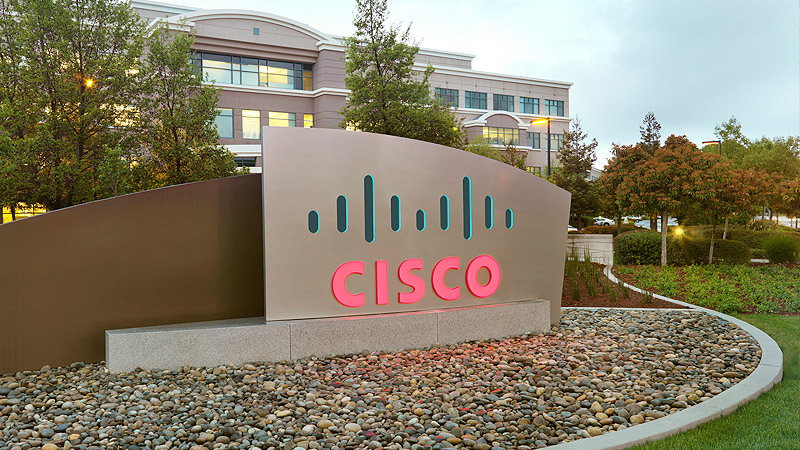BEIJING, Sept. 9, 2010 — Cisco announced today the availability of Cisco® Unified Communications for RTX. This innovative collaboration solution for China's enterprise users was developed by Cisco in partnership with Tencent, China's largest provider of integrated Internet services. Based on Cisco's Unified Communications technology and Tencent's enterprise-class network instant messaging platform, the solution unifies voice, video, data and applications into a one-stop desktop application and enables borderless collaboration anytime, anywhere.
Developed in China specifically for the Chinese market, this new solution meets the needs of Chinese market enterprise-class users and helps enterprises achieve greater business potential through innovative collaboration models. Taking advantage of the intuitive workflow of the original RTX, Cisco Unified Communications for RTX embeds rich applications such as Internet Protocol communication, click-to-dial, voice and video conferencing, visual voicemail, SMS (Short Message Service), and web sharing capabilities into Tencent's enterprise-class platform.
Cisco Unified Communications for RTX enables enterprises and organizations to simplify internal processes, and reduce communication costs, and realize revolutionary changes in how they conduct business. Enterprises can use corporate organizational contact information to increase search efficiency for individual users. Employees within the organization have the option to call their contacts or send emails or SMS. In addition, with the click-to-call and click-to-video features, users can begin voice or video calls instantly and can conveniently switch between the softphone (a software-based IP phone system that can be installed in PCs) and the desk phone, to help ensure uninterrupted conversation across media. Users can also utilize interactive webshare and on-premises, on-demand high-definition video-conferencing services, which can also be integrated with Cisco TelePresenceTM, to take advantage of richer real-time collaboration. With visual voicemail, users can record voice messages and organize them into a list, and can instantly sort and playback voice messages from their desktop computers. The new solution from Cisco and Tencent allows customers choice, flexibility and integration. The solution's open architecture and RTX APIs empower customers to integrate Cisco Unified Communications for RTX with backend office automation and enterprise resource planning systems. Cisco Unified Communications for RTX will support Simplified Chinese, Traditional Chinese, and English.
These features, designed for users in China, create excellent value for enterprise-class organizations, including:
- Reduced costs and increased productivity: By conducting in-person video conference meetings over Cisco Unified Communications for RTX, enterprises minimize the time spent on traveling and reduce travel costs. Cisco Unified Communications for RTX can improve collaboration for training, stimulate innovation, increase customer intimacy, and boost employee productivity through real-time communications.
- More rapid business processes: Cisco Unified Communications for RTX can be easily deployed or integrated into existing communication solutions, improving and optimizing communication infrastructures according to the specific demands of each organization. It unifies critical business communications, so that communications between and among an organization's leaders and employees are more frequent and more effective. The greater speed and agility brought by efficient, simple communication processes translates into quicker responses to market changes.
- Improved team performance and worker productivity: Deploying the leading enterprise IM technology can help organizations to capitalize on employee potential and improve team performance, which directly affects an organization's ability to retain top talent, as well as improve revenue growth, competitive differentiation, and time to market for new products.
"Cisco has always been dedicated to developing deep partnerships with local businesses. Today's announcement is a great example of a disruptive strategy and joint innovation with a strong local partner such as Tencent." said Jack Xu, vice president of the Cisco Unified Communications business unit. "Cisco Unified Communications for RTX provides a seamless communication platform for local enterprises and organizations. It will further promote the adoption of unified communications in China market and help create a multi-win situation for Cisco, Tencent and enterprise users."
"Tencent has leading Internet technologies and has consistently been a pioneer of exploration and innovation in serving our individual and enterprise users," said Jeff Xiong, co-chief technolgy officer of Tencent. "Working together with Cisco enables us to explore new Internet technologies and new business models for enterprise users, and to extend our technology and experience advantage in personal Internet services to enterprise users. In addition, our cooperation maximizes the potential of both companies, cultivating China's enterprise unified communications market. We will also reforge the 'communications' ability of Chinese enterprises through the one-stop enterprise interactive platform."
About Tencent
Tencent aims to enrich the interactive online experience of Internet users in China by providing a comprehensive range of Internet and wireless value-added services. Through its various online platforms, including Instant Messaging QQ, web portal QQ.com, QQ Game portal, multi-media social networking service Qzone and wireless portal, Tencent services the largest online community in China and fulfills the user's needs for communication, information, entertainment and e-Commerce on the Internet.
Tencent has three main streams of revenues: Internet value-added services, mobile and telecommunications value-added services and online advertising.
Shares of Tencent Holdings Limited are traded on the Main Board of the Stock Exchange of Hong Kong Limited, under stock code 00700. The Company became one of the 43 constituents of the Hang Seng Index (HSI) on June 10, 2008. For more information, please visit www.tencent.com.



